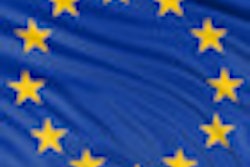
A new European Commission (EC) report recommends phasing out dental amalgam use in the next five years and improving enforcement of existing European Union (EU) waste legislation.
The report, authored by the consulting group Bio Intelligence Service (BIOS), also recommends phasing out mercury use in button cell batteries within two years after legislation is adopted.
The EC has been working to reduce mercury exposure to humans since the completion of a 2005 Extended Impact Assessment by the EC's Directorate-General Environment of the Commission Services.
At present, the EC's position is that dental amalgam and various alternative materials are considered effective and safe to use, based on a 2008 assessment by the Scientific Committees on Emerging and Newly Identified Health Risks and the Scientific Committee on Health and Environmental Risks.
But in a preliminary report published in July 2010, BIOS recommended phasing out mercury amalgam dental restorations throughout Europe. Sweden has already phased out dental mercury, while Denmark, Finland, the Netherlands, and Italy have all significantly reduced amalgam use. Others, including Germany, Spain, Italy and Austria, either have restrictions or guidance on amalgam in place.
Environmental impact
The current report focuses primarily on the adverse environmental effects of dental amalgam, rather than the potential health effects.
"There is currently no scientific consensus on the direct health effects of dental amalgam (except with regard to possible allergies caused by dental amalgam)," the authors wrote. "For this reason, future policy actions concerning dental amalgam addressed in this study focus on the environmental side of the problem and indirect health effects."
Dental amalgam is one of the main remaining uses of mercury in the EU, they noted. In 2007, dental amalgam was the second largest mercury use in the EU after chlor-alkali production.
Approximately 45 tons of mercury from EU dental practices end up in chairside effluents each year, only a part of which is captured and treated as hazardous waste in compliance with EU legislation, according to BIOS.
"Estimates developed in this study suggest that dental amalgam is a significant contributor to overall EU environmental emissions of mercury from human activities," they wrote.
The handling of dental amalgam waste as hazardous waste is a matter of better enforcing existing EU legislation on waste, they emphasized. They found that some 25% of EU dental facilities are still not equipped with amalgam separators and that a "significant proportion" of separators are not adequately maintained.
"In the absence of further EU policy action, environmental impacts due to the historical use of dental amalgam will continue to occur for several decades," the BIOS authors wrote.
Alternative materials
While alternative restorative materials have been developed, they are still not widely used in several European countries, including France, Poland, the U.K., Czechoslovakia, Romania, Spain, and Greece, according to the report. Reasons for this include the following:
- Mercury-free restorations are more expensive for patients in many countries.
- Not all EU dentists are properly trained in placing mercury-free restorations.
- Some dentists consider that composite materials are less durable than amalgam.
- Many patients are not aware that dental amalgam contains mercury, nor are they aware of the associated environmental impacts.
- Some dentists believe that long-term environmental and health effects of mercury-free materials have not been fully demonstrated.
In the absence of further EU policy action, dental amalgam may continue to be progressively substituted with mercury-free materials, mainly as a result of growing aesthetic concerns, the BIOS report noted. However, "dental amalgam may well continue to be used for many years in some of the less wealthy member states," the authors wrote.
In addition, it is expected that mercury-free dental restorations will continue to be more expensive for patients than amalgam restorations, although the cost difference will likely decrease "due to innovation and increased competition concerning the production of mercury-free materials" and improved skills in the handling of these materials.
Mercury ban by 2018?
The BIOS report offers three potential options for reducing the environmental impact of dental amalgam in the EU:
Improve enforcement of EU waste legislation regarding dental amalgam. The EC would ask member states to report on measures taken to manage dental amalgam waste in compliance with EU waste legislation and to provide evidence of the effectiveness of the measures in place.
Encourage member states to take measures to reduce the use of dental amalgam while promoting the use of mercury-free materials. Such measures would aim to improve dentists' awareness of the environmental impacts of mercury and the need to reduce its use, review dental teaching practices so that mercury-free restoration techniques are given preference, and improve public dental health to reduce the occurrence of caries.
Ban the use of mercury in dentistry. Under the current scenario, this could happen by 2018, according to BIOS.
"Options 1, 2 and, to a great extent, 3 would bring significant health-related benefits by reducing occupational exposure of dental personnel and exposure of the general public to environmental mercury emissions resulting from dental amalgam use," the report authors wrote.
Option 3 would yield "a significant reduction of dental mercury releases" within the next 15 years and would "virtually eliminate" the environmental impact of dental mercury in the longer term, they noted.
"However, because the cessation of mercury releases under Option 3 would only be significant after about 15 years, Option 3 needs to be coupled with Option 1 in order to reduce mercury releases from historical use of amalgam in the short term," the report concluded.



















